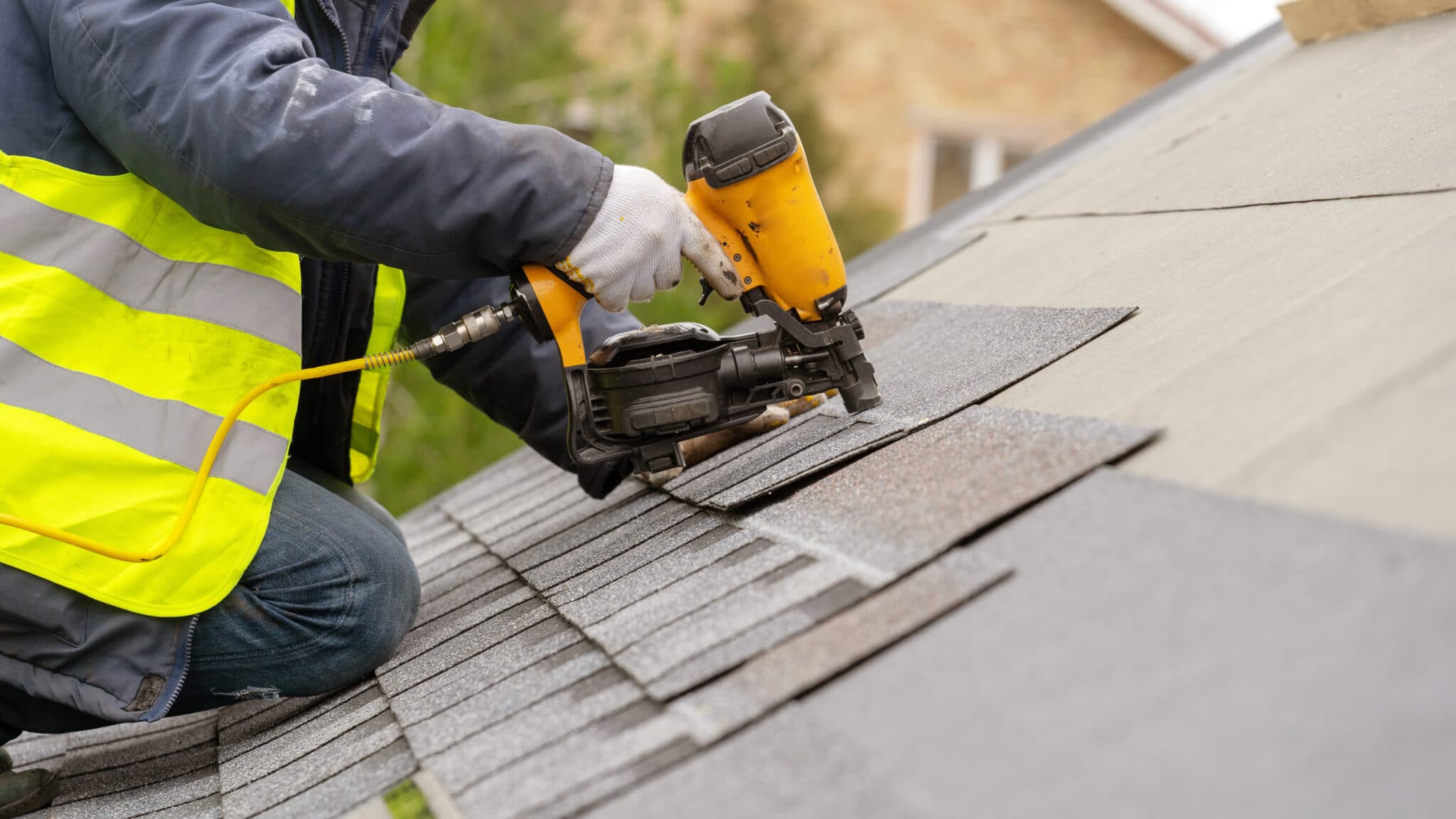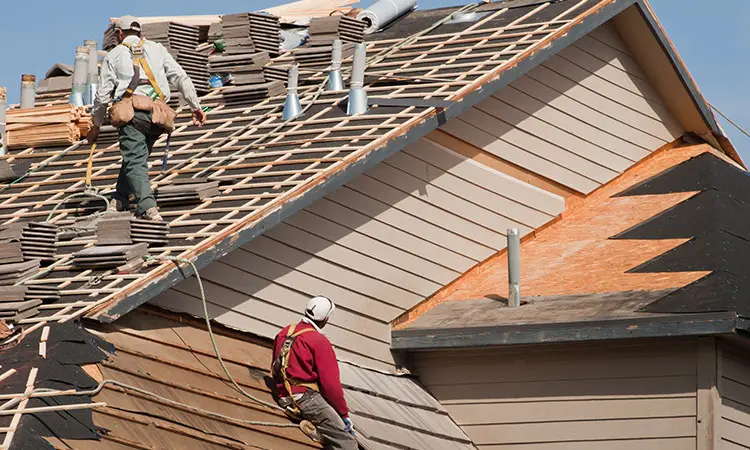Comprehending the Various Kinds of Roofing Systems: A Comprehensive Guide for Homeowners
With an array of options-- ranging from the conventional gable to the contemporary flat-- each kind provides unique advantages and obstacles that should line up with the home owner's ecological considerations and details needs. As we discover the ins and outs of various roof covering kinds, it ends up being obvious that one size does not fit all; the best choice might stun you.
Gable Roofings
Saddleback roofs, identified by their triangular shape, are amongst the most preferred roof designs because of their simplicity and performance in dropping water and snow. This design includes two sloping sides that meet at a ridge, permitting effective drain and minimizing the danger of water build-up. The steep pitch commonly linked with saddleback roofs enhances their ability to manage hefty rainfall, making them suitable for various climates.
In addition to their sensible benefits, saddleback roofs supply aesthetic adaptability. They can be adjusted to various architectural styles, from traditional to modern-day homes. The style can also fit extra functions such as dormer home windows, which improve natural light and ventilation in the attic room.
Furthermore, saddleback roofs give ample room for insulation, contributing to power effectiveness. Homeowners can select from a range of roofing products, consisting of asphalt shingles, steel, and floor tiles, further boosting customization alternatives.
In spite of their advantages, gable roofings may require additional support in areas prone to high winds or heavy snowfall. In general, the saddleback roof continues to be a preferred option because of its blend of functionality, toughness, and aesthetic charm.
Apartment Roofs
Flat roofing systems are often recognized for their minimal design and practical applications, particularly in business and industrial settings (oahu roofing). These roofs feature a nearly straight or horizontal surface area, which enables for simple building and functional area usage. While they might do not have the aesthetic allure of pitched roofs, flat roofs supply countless advantages, especially in city atmospheres where making the most of space is critical
One of the primary advantages of flat roofings is their ease of access. Homeowners can make use of the roofing system room for different purposes, such as roof gardens, balconies, or solar panel installments. Furthermore, flat roof coverings are usually more economical to keep and set up contrasted to their sloped counterparts, as they need fewer materials and labor.
Nonetheless, flat roof coverings do existing certain challenges. Correct drainage is crucial to protect against water pooling, which can lead to leakages and architectural damages. Thus, picking top notch waterproofing products and regular assessments are essential for making certain long life. Typical products used for level roof coverings consist of built-up roofing (BUR), changed asphalt, and single-ply membrane layers, each offering distinct advantages. In general, flat roofing systems serve as a practical and adaptable selection for lots of property owners and companies alike.
Hip Roofing Systems
Hip roofing systems are characterized by their sloped sides that merge at the top, creating a ridge. This layout is unique from saddleback roofs, as all four sides of a hip roof slope downwards toward the wall surfaces, supplying a much more stable framework. The angle of the slopes can differ, enabling flexibility in building visual appeals and capability.
Among the main advantages of hip roofings is their capability to stand up to heavy winds and adverse weather. The sloped surfaces make it possible for much better water drainage, Get More Info lowering the risk of leakages and water damage. In addition, hip roofing systems offer boosted attic room area, which can be made use of for storage or also converted into livable areas.
Nevertheless, constructing a hip roof covering can be much more intricate and expensive than simpler roofing types, such as saddleback roofs. The extra product and labor included in developing the slopes and making certain proper architectural integrity can lead to higher costs. Regardless of these downsides, many home owners prefer hip roofing systems for their toughness, visual appeal, and possibility for power efficiency.
Mansard Roof Coverings
Mansard roof coverings, typically acknowledged by their special four-sided layout, function 2 inclines on each side, with the reduced slope being steeper than the top. This architectural style, originating from France in the 17th century, is not just cosmetically appealing however useful, as it makes best use of the functional room in the top floorings of a structure. The high reduced slope permits even more headroom, making it a perfect choice for attics or loft spaces, which can be exchanged living spaces.
Mansard roofing systems are characterized by their versatility, fitting numerous building styles, from conventional to modern. They can be built with various products, consisting of asphalt shingles, slate, or metal, providing home owners with a variety of choices to fit their budget plans and preferences. Furthermore, the layout permits the combination of dormer windows, improving natural light and air flow in the top degrees.
However, it is vital to consider the possible downsides. Mansard roofings may call for even more maintenance due to the intricacy of their layout, and their high inclines can be testing for snow and rainfall drainage. Overall, mansard roof coverings combine elegance with practicality, making them a preferred option among house owners looking for distinctive building features.
Dropped Roof Coverings
As homeowners progressively look for simplicity go to this website and functionality in their building designs, lost roofs have become a prominent option. Identified by a single sloping aircraft, a shed roof presents a minimal aesthetic that enhances various home designs, from contemporary to rustic.
Among the main benefits of a shed roof is its simple building, which typically translates to lower labor and product costs. This style enables for reliable water drain, click to read minimizing the risk of leaks and water damage. In addition, the vertical incline offers adequate room for skylights, boosting natural light within the interior.
Dropped roof coverings additionally offer flexibility in regards to use. They can be effectively integrated into enhancements, garages, or outdoor structures like pavilions and sheds. Furthermore, this roofing style can suit different roof materials, consisting of steel, asphalt tiles, or perhaps eco-friendly roofings, straightening with green initiatives.
Nevertheless, it is important to consider local climate problems, as hefty snow tons may necessitate modifications to the roof's angle or structure. Generally, shed roofing systems present a useful and visually pleasing alternative for house owners wanting to optimize functionality without jeopardizing design.
Final Thought


Gable roofing systems, identified by their triangular shape, are among the most prominent roof designs due to their simplicity and performance in dropping water and snow. oahu roofing. The steep pitch frequently associated with gable roof coverings improves their capability to take care of heavy rainfall, making them ideal for numerous environments
While they might lack the visual allure of pitched roofs, level roofings supply various advantages, specifically in urban environments where making the most of room is essential.
